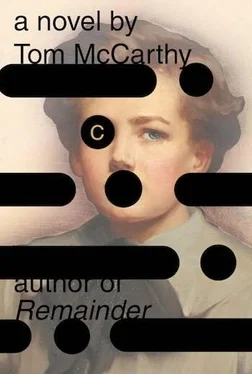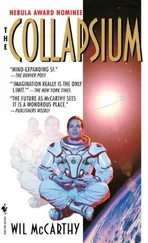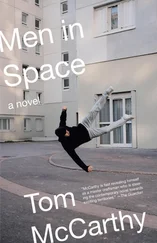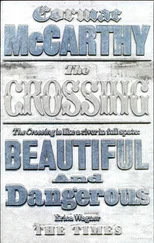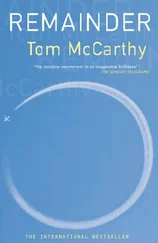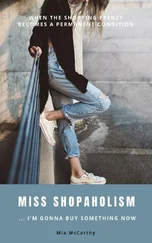“-on the twelfth of December, 1901,” his father concludes, adding: “If I’m right, the implications are enormous.”
He’s started walking away from the mulberry trees as he speaks. Serge follows him across the lawn and through the Crypt Park ’s gates. As he strides through the long grass, his father’s still holding the ammeter out in front of him.
“Imagine,” he confides to Serge, lowering his voice as though they were being overheard, “just imagine: if every exciting or painful event in history has discharged waves of similar detectability into the ether-why, we could pick up the Battle of Hastings, or observe the distress of the assassinated Caesar, or the anguish of Saint Anthony during his great temptation. These things could still be happening, right now, around us.”
He pauses, and looks down at the ammeter before lowering his voice right to a whisper as he says:
“We could pick up the words, the very vowels and syllables, spoken on the cross… ”
His voice trails out in a hiss. Serge peers down at the needle once more: it’s veered way over to the right side of the dial, past forty. He looks up again, letting his gaze sweep the Crypt Park. As it does, he seems to detect a general static hovering round its grass and trees: a static through whose reaches, it strikes him for some reason, bounce the cries of all the men he’s killed-ranged guns on, strafed, pinpointed with photography, failed to protect from shark-bite, snagged from their cushioned downward drift and slammed into the earth. He closes his eyes for a moment, and sees, behind the static, an operator: a female one, sitting at some kind of switchboard shaped like an outlandish loom.
This ghostly operator’s face is mirrored in those of the Day School pupils. These have changed since he left for the war-grown older, been replaced-but seem strangely familiar, even the new ones. It works both ways: a sense of recognition seems to flicker over the faces when they meet his, as though their owners were somehow privy to what happened out in France and Germany, could hear it rebounding round the reaches of their deafness. Bodner too: in his immense indifference to almost everything around him there seems to lie a tacit understanding and acceptance of anything Serge might have undergone, as though he’d undergone it too. Perhaps this is because Bodner, unlike the shopkeepers, or Dr. Learmont, or each and every member of the stream of visitors who pass by Versoie, makes no demand to have Serge’s adventures recounted to or summarised for him. He chews his tongue-stump like he always used to, shunts wheelbarrows from one garden to another, makes tea for Serge’s mother, all just as before…
His mother’s aged. She looks depleted, like a silkworm that’s secreted all it can. Her eyes have sunk into their sockets; her cheeks have contracted around her jaw and cheekbones. Despite having no production line to oversee, she still spends long stretches of time inside her storeroom, itemising the few remaining silks, doodling designs for new ones to be made once the blight lifts, or sitting at her low table staring into space. Serge joins her there most afternoons: they now take tea together. When the weather’s nice they adjourn to one or other of the gardens and sit there in silence, untroubled by the bees and flies that hover around them, land on them, take off and land again quite nonchalantly, confident in the knowledge that they won’t be swatted off.
Serge’s London flat is in Bloomsbury, on Rugby Street. It’s on the second floor, above a dairy shop. Each morning he’s awoken by the rattle of glass bottles and the tap of hooves, mingling with men’s voices as they rise through his dreams to break their surface like the tentacles of some primordial kraken. He stops off around the corner for his breakfast, in a Turkish café on Lamb’s Conduit Street: a syrupy, layered baklava. Sick children, let out of Great Ormond Street Hospital on parole, are wheeled by like the cripples were in Kloděbrady. Sometimes their parents or nurses stop and buy them pastries, which the children never seem to enjoy much. Their faces have the look of old people’s: disillusioned, sad, resigned. Sins of the fathers, Serge thinks as he watches them each day. Sucking walnut pieces from the gaps between his teeth, he strolls through Russell Square Gardens, trying to work out the logic governing the fountains’ spurting sequences (a task to which he sets his mind obsessively for as long as it takes to wander past them, but instantly forgets as soon as he’s left the square), then skirts the stone lion-guarded rear wall of the British Museum and, finally (and always anticlockwise), follows the fence-rails round the closed garden in Bedford Square until their long ellipse deposits him a few yards from the Architectural Association’s front door.
Mornings are taken up by lectures. Theodore Lyle, FRIBA., holds forth in the ground-floor seminar room on the influence of ancient Greece on the architecture of the Roman, mediaeval and-to cut a long list short-all subsequent periods:
“The modern tendency,” he declaims without notes, turning to face the students from plan drawings of the Parthenon and Hephaesteum into which sketches of peripteral and prostyle columns, metopes and triglyphs are inset, “is to consider these structures as ruins rather than as functioning buildings. The temples, as they present themselves to us today, stand stripped of their original stucco, colour and so on. What we lose is the effect of reflected light flowing over the smooth, coloured wall surfaces, across the bronze grills and balustrades, the gold, ivory and precious stones. I want you, when contemplating the incomplete edifices of the Attic and Hellenic periods, to turn back the clock and think of them as under construction, not beyond it…”
Fittingly, the refurbishment of the room in which these thoughts are being delivered is not yet complete. Window-sills stand upright in the corner, waiting to be affixed to the wall; cornicing smells of wet plaster, floorboards of fresh varnish: the school’s only just moved premises from Tufton Street. The canteen downstairs is still being painted. Students show off their command of building structures as they lunch in it:
“This sausage is like a fluteless column,” one says as he prods his toad-in-the-hole.
“Then my poached egg is a gilded saucer dome, rendered in bird’s-eye perspective,” says another, not to be outdone. “What have you got, Carrefax?”
Serge looks down at his plate: all he’s got is a roll and a slab of butter.
“A burial mound, with gravestone on the side,” he answers.
He never eats much for lunch. In the afternoons they’re meant to do site visits-cathedrals, schools, train-stations and the like, producing sketches-but he usually ducks out of these and slinks off towards the web of streets that lurk within the triangle formed by Shaftesbury Avenue, Charing Cross Road and the north edge of Leicester Square. He first stumbled across the area when he went to Mrs. Fox’s Café in Little Newport Street to meet a mechanic who’d offered to fix a minor problem with his father’s car (he’d brought up his trunks in it the week before; his father was to drive it back the following week). The man had procured a machine part at a knock-down price, and brought it to the café swathed in a sheet which he unwrapped as though it contained contraband, which it effectively did. Most of Mrs. Fox’s clientele seem to be criminals of one sort or another. They sit at tables nursing single coffees for hours on end, communicating with their fellow customers in nods and murmurs. Serge sometimes spends whole afternoons in here, drawing plan sketches of imaginary spaces. He likes the ambience: the sense of being in some kind of nether world whose air is rich with covert signals…
Читать дальше
